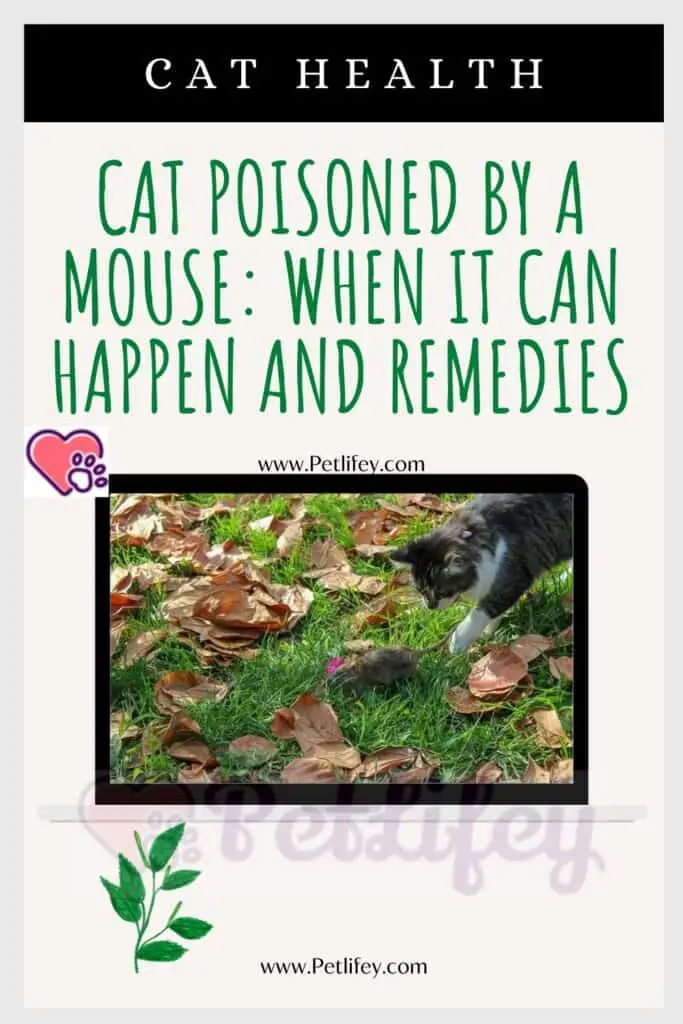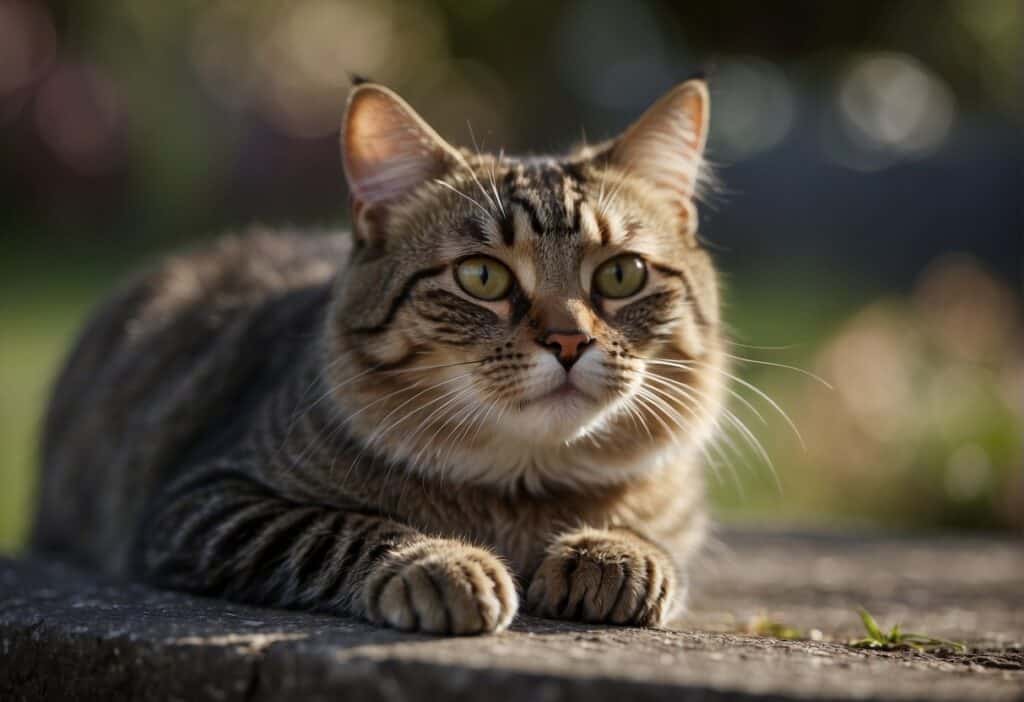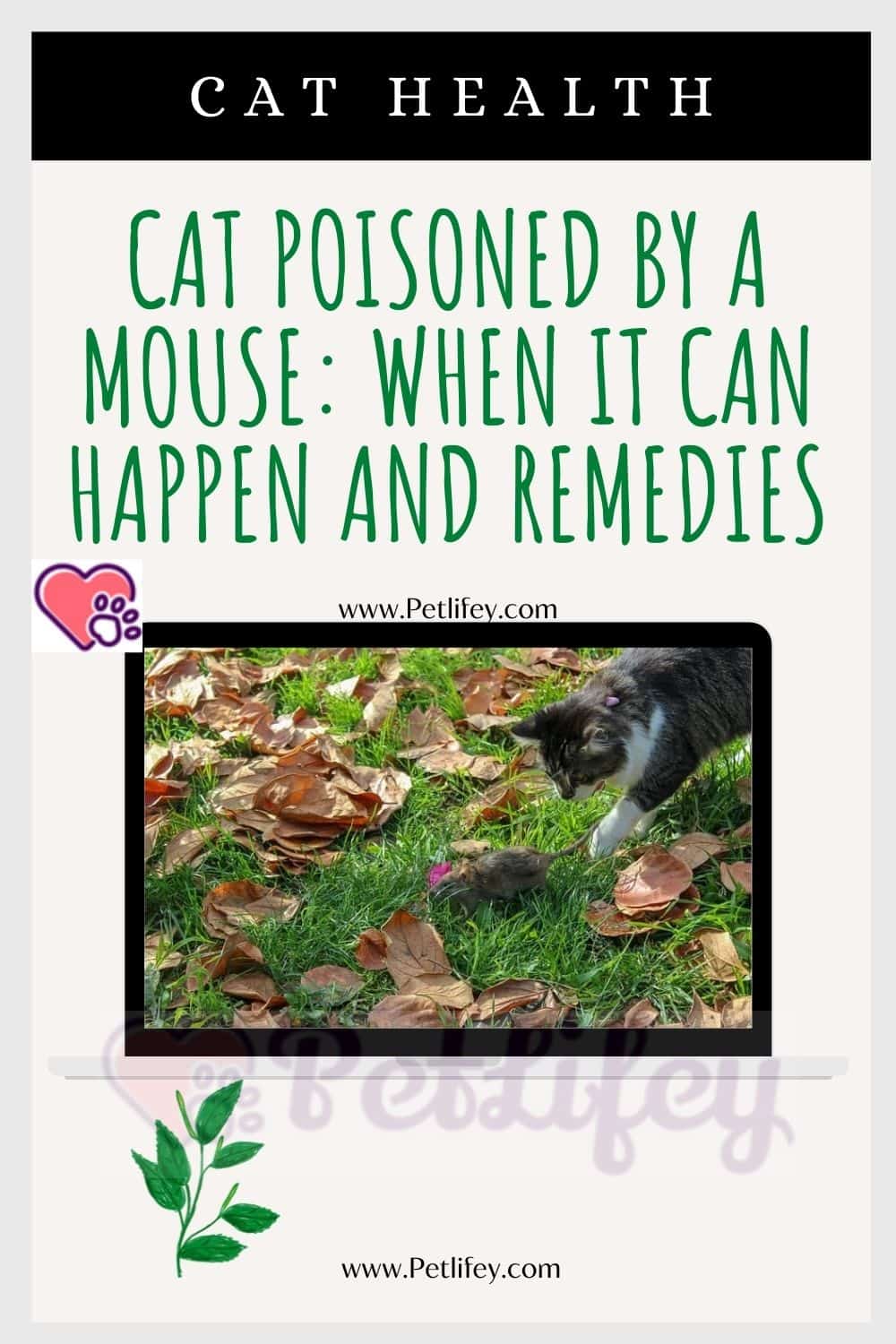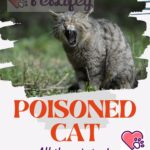Cat Poisoned by a Mouse: Understanding Risks and Treatment Options

Your cat’s natural instincts often lead it to chase and sometimes consume rodents, a behavior that harks back to their ancestral hunting habits. However, this seemingly normal activity can take a risky turn if the mouse your cat catches has been poisoned. While instances of cats becoming severely ill from eating a poisoned rodent are relatively rare, it’s crucial to be aware of the dangers and know how to respond.
When a cat ingests a rodent that has consumed rodenticide, there is a potential for secondary poisoning. Symptoms of poisoning in cats can include a lack of appetite, lethargy, vomiting, diarrhea, and even traces of blood in their vomit or stool. Understanding these signs is key to providing timely help to your feline friend.
If you suspect that your cat has eaten a poisoned mouse, it is imperative to seek immediate veterinary care. A veterinarian is equipped to assess the severity of the poisoning and administer the appropriate treatment, which may include activated charcoal, medication to control symptoms, or more intensive support such as IV fluids. It’s always better to err on the side of caution and consult with a professional to ensure the health and well-being of your pet.
Understanding Rodent Poisoning in Cats

When your cat ingests a mouse that has consumed rodenticide, this can lead to secondary poisoning. Rodenticides, commonly known as rat poison, are designed to kill rodents but can have devastating effects on non-target species, including your cat.
Symptoms of Toxicity:
- Apathy
- Vomiting
- Lethargy
- Diarrhea
- Respiratory distress
- Seizures
Immediate Steps:
- Isolate your cat to prevent it from consuming anything else and to closely monitor its behavior.
- Identify the type of rodenticide, if possible. This could be crucial for the vet to determine the proper treatment.
- Seek veterinary care immediately. Time is critical to effectively counteract the effects of the poison.
Possible Treatments:
- Inducing vomiting: This may be done by a professional if the ingestion was recent.
- Activated charcoal: Administered to absorb toxins.
- Vitamin K therapy: Often used if the poison is an anticoagulant.
Remember, prevention is key. Store rodenticides out of reach, and consider alternative pest control methods to protect your cat from these dangers. If you suspect rodent poisoning, act without delay to maximize the chance of a full recovery for your feline friend.
Common Symptoms of Poisoning
Recognizing the symptoms of poisoning in your cat is vital for timely intervention and treatment. Look for specific physical signs and behavioral changes that suggest potential poisoning.
Physical Signs
Your cat may exhibit various physical signs if poisoned. Key indicators include:
- Bleeding: Unusual bleeding from the nose, mouth, or rectum, or blood in urine or feces can signify poisoning.
- Pale Gums: Check your cat’s gums; pale or white gums may indicate anemia or blood loss.
- Bruising: Small, red pinpoint marks or large bruises on the skin could be a result of bleeding disorders caused by poison.
- Lethargy: If your cat appears unusually tired or weak, it could indicate a systemic issue like poisoning.
- Seizures: Sudden, uncontrolled convulsions are alarming and could be symptomatic of neurological effects from certain toxins.
Behavioral Changes
Poisoning may also alter your cat’s behaviors, including:
- Weakness: A general sense of malaise or decreased energy levels could be a sign of various conditions, including poison ingestion.
- Kidney Failure: Watch for changes in urination patterns, as kidney function may be impaired due to poisoning.
- Liver Failure: Symptoms include jaundice (yellowing of the skin and eyes), which often points to liver damage.
It is crucial to monitor your cat closely and consult a veterinarian immediately if you observe any of these symptoms.
Types of Rodenticides and Their Effects
When your cat encounters rodenticides, it’s crucial to understand the specific types and their potential effects to respond appropriately.
Anticoagulant Rodenticides
Anticoagulant rodenticides work by inhibiting the synthesis of vitamin K-dependent clotting factors, which are vital for blood coagulation. Warfarin, chlorophacinone, brodifacoum, and bromadiolone are common anticoagulants used in these poisons. Ingesting even small amounts can lead to severe and sometimes fatal bleeding in cats.
Symptoms:
- Uncontrolled bleeding
- Pale gums
- Bloody urine or stool
Treatment:
- Induced vomiting
- Administration of Vitamin K as an antidote
Neurological Toxins
Neurological toxin rodenticides like bromethalin disrupt the central nervous system. They induce swelling within the brain, resulting in neurological symptoms and potentially irreversible damage.
Effects:
- Seizures
- Lethargy
- Loss of motor skills
Response:
- Immediate veterinary care
- Possible use of activated charcoal to mitigate absorption
Vitamin-Based Toxins
Rodenticides containing Vitamin D3 also pose a risk, as they lead to increased calcium levels, causing hypercalcemia. This can result in mineralization of organs and tissues, potentially leading to kidney failure.
Risks:
- Organ damage
- Muscle weakness
- Gastrointestinal distress
Intervention:
- Fluid therapy to prevent dehydration
- Medications to control calcium levels
- Supportive care for affected organs
First Aid and Home Remedies for Poisoned Cats
When your cat has been poisoned, quick and appropriate first aid can make a significant difference in their recovery. Certain home treatments may also be applied to stabilize your cat before you’re able to get professional veterinary help.
Decontamination Procedures
If you suspect your cat has been poisoned by ingesting a toxic substance, immediate decontamination is crucial. First, if there is any substance on their skin or fur, wash them thoroughly with mild soap to prevent further ingestion during grooming. Use gloves to protect yourself and a soft cloth or sponge to gently clean the cat.
For ingested poisons, activated charcoal may be used, which works by absorbing the toxic substances in the stomach and intestines. It’s vital to only use it if directed by a veterinarian, as administering it incorrectly can worsen the situation.
Home Treatments
If advised by a vet, you may induce vomiting to expel the poison. Hydrogen peroxide is a common emetic agent for this purpose. However, you should never induce vomiting without specific instructions from a professional, as it can be dangerous with certain types of poisons or in certain medical conditions.
Administering intravenous fluids at home is not recommended without veterinary expertise and the right equipment. If your cat is showing signs of poisoning — lethargy, vomiting, seizures, or any other concerning symptoms — take them to a vet immediately, as they may need intravenous fluids and other professional treatments to recover.
When to Contact a Veterinarian
If your cat exhibits any of the following symptoms after consuming a mouse, it is critical to contact a veterinarian immediately:
- Vomiting: Persistent or severe vomiting is a clear sign of distress.
- Lethargy: If your cat is unusually inactive or weak, these could be symptoms of poisoning.
- Bleeding: Any trace of blood in vomit, stool, or urine warrants prompt veterinary attention.
- Seizures: A sign of severe neurological impact, requiring immediate veterinary care.
| Symptoms | Action Required |
|---|---|
| Vomiting | Contact veterinarian |
| Lethargy | Schedule an urgent visit |
| Bleeding | Seek immediate assistance |
| Seizures | Emergency veterinary care is necessary |
Furthermore, if you suspect your cat has ingested a poisoned mouse, don’t wait for symptoms to develop. Call your veterinarian or a Pet Poison Hotline at once, as early intervention can significantly improve your cat’s prognosis. Your veterinarian can provide instructions for immediate care and inform you if an emergency visit is necessary.
Remember, time is critical in cases of poisoning. A rapid response to these warning signs can make a significant difference in your pet’s recovery. Your awareness and prompt action are vital in protecting your cat’s health.
Professional Treatment Options
If your cat has been poisoned by consuming a poisoned mouse, it is critical to seek immediate veterinary attention. Professional treatments focus on stabilizing your cat’s condition and managing symptoms, with a goal of clearing the toxin from your cat’s system.
Diagnostic Testing
Your vet will perform a series of diagnostic tests to confirm poisoning and assess the extent of the damage. These may include:
- Complete Blood Count (CBC): To check for anemia or signs of infection.
- Blood Chemistry Panel: To evaluate organ function and electrolyte status.
- Coagulation Profile: To detect coagulopathy, a bleeding condition that can occur in poison cases.
- Urinalysis: To assess kidney function and signs of bleeding in the urine.
Treatment Procedures
Once a diagnosis is made, your cat may receive one or more of the following treatments:
- Decontamination:
- Induce vomiting or administer activated charcoal to minimize toxin absorption (only if within a couple of hours of ingestion and appropriate for the specific poison).
- Supportive Care:
- Intravenous fluids (IV): Combat dehydration, support kidney function, and help flush the toxin from the system.
- Blood Transfusion: Required in severe cases where there is significant blood loss or if your cat’s ability to clot blood is compromised.
- Oxygen Therapy: For difficulty in breathing or if brain swelling is a concern.
- Medication:
- Vitamin K1: This is often used in cases where a rodenticide that causes bleeding has been ingested.
- Anticonvulsants: If your cat is suffering from seizures or other neurological signs due to a neurological toxin.
- Pain Relievers: To manage discomfort associated with poisoning.
Each treatment addresses specific symptoms and aims to support your cat’s recovery. Early intervention can greatly improve the prognosis, so it is imperative that your cat receives veterinary care as soon as poisoning is suspected or known.
Preventing Cat Poisoning
To protect your cat from the dangers of poisoning, it’s essential to manage their diet and environment carefully. Focus on these two pillars of prevention to keep your feline friend safe.
Lifestyle and Diet
Diet Control: Limit your cat’s exposure to potential hazards by maintaining a controlled diet. Feed your cat high-quality commercial cat food that meets AAFCO (Association of American Feed Control Officials) standards, as this ensures nutritional adequacy and safety. If feeding raw or homemade diets, consult with a veterinarian for proper nutrition and parasite prevention.
- Avoid Poisoned Rodents: If you use pest control measures, opt for methods that pose no secondary poisoning risk to your cat, such as live traps or sonic pest repellents.
Home and Environment Safety
Parasite Control: Regular use of veterinarian-researched parasite preventatives is vital to protect your cat from parasites like roundworms. Obtain these products through a licensed veterinarian to ensure their efficacy and safety.
Safe Pest Control:
- Chemicals: If chemical rodenticides are necessary, place them in locations inaccessible to your cat and monitor their exposure outdoors.
- Essential Oils: Exercise caution when using essential oils for pest control, as some can be toxic to cats.
- Toys: Regularly provide your cat with engaging toys to reduce their interest in hunting potentially poisoned rodents.
Veterinarian Visits: Schedule routine check-ups with your veterinarian to stay informed on the latest in poison prevention and health maintenance for your feline companion.
Impact of Rodent Poisons on Cats and Ecosystem
When you use rodenticides for pest control, you might inadvertently affect non-target wildlife, including cats and beneficial species. These substances can move up the food chain, leading to environmental disruptions.
Environmental Considerations
Rodenticides, designed to kill rodents such as mice and rats, often contain potent toxins that can remain in the environment. These chemicals can sometimes be resistant to degradation, leading to long-term ecological impacts. When rodents are poisoned but not immediately killed by these substances, they can become easy prey for predators. If a protected raptor or mammal consumes a poisoned rodent, this can lead to secondary poisoning and potentially impact species population numbers.
- Persistence in Environment: Some commonly used rodenticides are:
- Bromadiolone
- Difethialone
- Brodifacoum
These substances can have a lasting presence in ecosystems, often measured in more than just days or weeks.
- Secondary Poisoning Risk: Predators that typically feed on rodents may ingest these substances, leading to:
- Illness
- Reduced reproductive success
- Death
Effect on Beneficial Species: It’s important to note that not all rodents are pests; some play a crucial role in the ecosystem. The use of rodenticides could also inadvertently diminish these beneficial populations.
Indirect Poisoning Through the Food Chain
When your cat catches and ingests a poisoned rodent, it is at risk of secondary poisoning, a phenomenon also known as relay toxicosis. This can result in symptoms of poisoning in your cat due to the toxic substances originally intended for rodents.
- Symptoms in Cats: When ingesting poisoned prey, cats may exhibit:
- Lethargy
- Vomiting
- Bleeding disorders
- Factors Influencing Toxicity: The severity of symptoms can depend on:
- The type of poison ingested
- The amount of poison in the rodent’s system
- The size and health of your cat
Methods of Rodent Control: Different types of rodent control, such as bait stations or glue traps, can have varying degrees of impact. Bait stations are designed to contain rodenticides securely, but scavengers or pets may still access the poison indirectly. Glue traps, on the other hand, can capture rodents without the use of poison but do not prevent a poisoned rodent from being a toxic meal for your cat.
Rodent poisonings of cats are often accidental and can be managed by considering non-toxic alternatives for rodent control. This reduces the risk for animals that are not the intended targets and minimizes ecological disruption.







